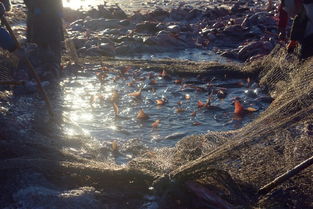Content:
Introduction: Fishing, an age-old pastime, is not just about the tranquility it brings but also the thrill of the catch. One of the most crucial skills in fishing is mastering the art of hook removal and controlling the lure to ensure a successful catch. Whether you are a seasoned angler or a beginner, understanding how to handle a fish once it's on the hook is essential. This article delves into the intricacies of hook removal and provides you with valuable techniques to improve your fishing experience.
Proper Hook Set: Before we delve into hook removal, it's important to understand how to set the hook effectively. A well-set hook is more likely to result in a successful catch. Here are some tips to ensure a proper hook set:
- Use a sharp hook: A dull hook is less likely to penetrate the fish's mouth effectively.
- Present the bait correctly: Ensure the bait is moving naturally in the water to trigger the fish's interest.
- Use a quick, firm pull: Once the fish takes the bait, pull the rod tip sharply back to set the hook.
Hook Removal Techniques: When a fish is on the hook, the next step is to remove the hook safely and efficiently. Here are some techniques to consider:
- Use needle-nose pliers: These pliers are specifically designed for hook removal and can grip the hook securely.
- Grasp the hook with your fingers: If pliers are not available, you can carefully grasp the hook with your fingers, but be cautious to avoid getting pricked.
- Angle the hook: Gently angle the hook at a 45-degree angle to reduce the risk of injury to the fish and yourself.
- Cut the line: If the hook is deeply embedded, you may need to cut the line close to the hook and then remove the hook with pliers or fingers.
Controlling the Lure: Controlling the lure is just as important as hook removal. Here are some tips to help you manage the lure effectively:

- Adjust your rod's position: The angle of your rod can significantly affect the way the lure moves. Experiment with different angles to find what works best for the fish you're targeting.
- Use a variety of retrieves: Varying the speed and direction of your retrieve can mimic different fish behaviors and trigger strikes.
- Pay attention to the water conditions: Wind, current, and depth can all impact how your lure behaves. Adjust your technique accordingly.
- Use the right bait: Different fish respond to different baits. Research the species you're targeting and use the appropriate lure or bait.
Landing the Fish: Once you've successfully removed the hook and controlled the lure, the final step is to land the fish. Here are some tips to help you do so:
- Keep the fish in the water: Avoid landing the fish on the bank or deck to minimize stress and injury.
- Use a net: A fish net can help you safely scoop the fish out of the water without causing harm.
- Handle the fish gently: Be gentle when handling the fish. Avoid squeezing or throwing it around.
- Release the fish if necessary: If the fish is too small or if you're not planning to keep it, release it back into the water as quickly and gently as possible.
Conclusion: Mastering the art of hook removal and lure control is a skill that can greatly enhance your fishing experience. By following the techniques outlined in this article, you'll be better equipped to handle fish safely and efficiently, resulting in more successful catches and a more enjoyable fishing trip. Remember, the key to successful fishing lies not just in the equipment but in the knowledge and skill of the angler. Happy fishing!












